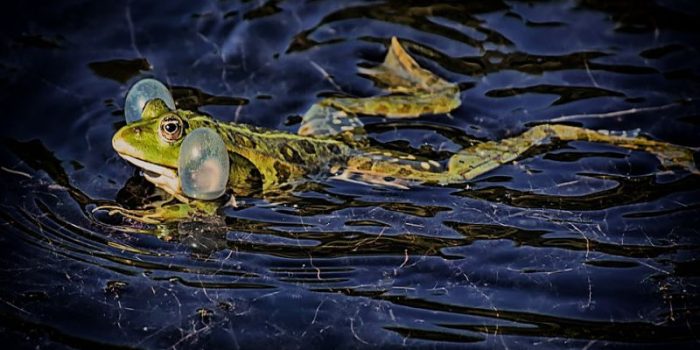The world of amphibians is home to many unique creatures, including the Pumpkin Toadlets, also known as the Brachycephalus species of frogs. These tiny frogs, native to Brazil, have caught the attention of scientists and naturalists alike due to their unusual and distinctive features. With around 36 species in the genus, the classification of these toadlets is still being debated as some species have slight genetic differences and similar physical attributes.
Though small in size, the Pumpkin Toadlets are eye-catching with their vibrant colors and round shape, almost resembling a miniature pumpkin. Despite their cute appearance, upon closer examination, it becomes clear that these frogs deviate from the typical characteristics of their kind. In fact, some may even argue that they are not the best at exhibiting the typical traits of frogs. Whether it be their size, shape, or behavior, the Pumpkin Toadlets are truly one-of-a-kind.
1. Tadpoles
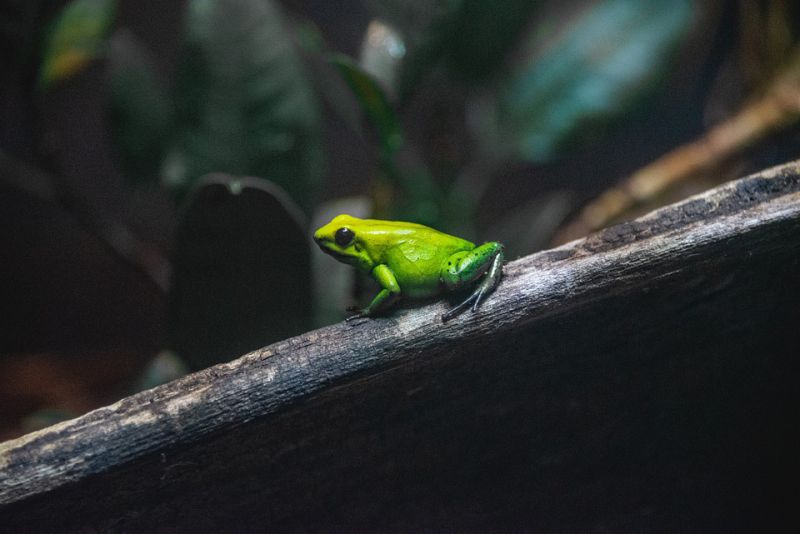
The life cycle of the Pumpkin Toadlet is unique and captivating. Unlike other frog species, the Pumpkin Toadlets skip the tadpole phase and emerge as miniature versions of an adult after just 64 days of incubation. Upon hatching, they break out of their eggs using an egg tooth, and they are immediately independent, unlike some frogs that rely on chemicals to escape.
These miniature wonders of nature are a visual treat, with their bright colors and cartoon-like appearance. However, they challenge the typical notions of what it means to be a frog. Unlike most frogs, they are unable to jump or swim and are even deaf to their own mating calls. Additionally, their small tails disappear shortly after hatching, making them unique in the world of amphibians.
The Pumpkin Toadlets are a testament to the diversity of life on Earth and the limitless possibilities of evolution. From their distinct egg-hatching process to their non-traditional frog-like characteristics, they offer a fresh perspective on the world of amphibians. If you’re interested in the unusual and the fascinating, the Pumpkin Toadlet is definitely worth learning more about.
Read More: Pumpkin benefits – World’s healthy food
2. Mating
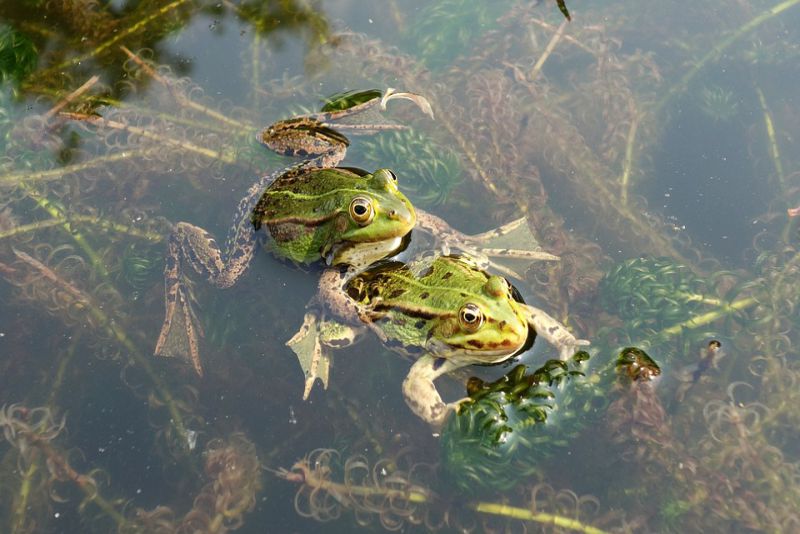
The fascinating and unique lovemaking rituals of Pumpkin Toadlets have garnered attention among amphibian enthusiasts. These little creatures stand out from their peers with their unconventional approach to mating. During Brazil’s wet season, when the breeding season is in full swing, male Pumpkin Toadlets take a two-step approach to ensure successful fertilization.
The male then switches things up, moving to an axillary position, holding the female above her arms and almost underneath her armpits. This change in position is what sets the Pumpkin Toadlets apart from other members of their order and is a rare occurrence within the Anura order, of which they are a part.
Moreover, the lovemaking habits of the Pumpkin Toadlets are a fascinating glimpse into the unique and diverse world of amphibians. These creatures offer a fresh perspective on what it means to be an amphibian, and their unconventional approach to mating makes them truly one of a kind.
3. Eggs On Land
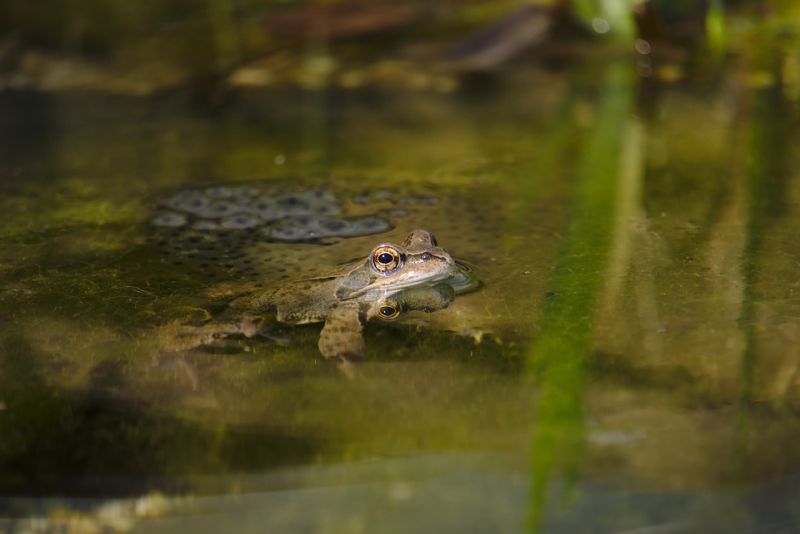
The life cycle of the Pumpkin Toadlet is full of fascinating and unique moments, and the aftermath of their lovemaking is no exception. Unlike other amphibian species, the Pumpkin Toadlet does not lay her eggs in water but instead opts for a terrestrial approach.
The female will find a suitable spot on land, often under a log or amidst the damp forest soil covered by leaf litter. This location is carefully chosen to provide the ideal conditions for her eggs to develop, especially during the breeding season, which occurs during Brazil’s wet season.
However, the female’s role in the life cycle of the Pumpkin Toadlet does not end there. As soon as she has completed her task, she quickly departs from her eggs, leaving them to hatch on their own. There are no teary goodbyes or nurturing moments for the female, who must move on to lay eggs for the next generation of Pumpkin Toadlets.
Moreover, the post-mating behavior of the Pumpkin Toadlet highlights the unique and fascinating adaptations that these creatures have developed over time. From their unconventional lovemaking rituals to their terrestrial egg-laying habits, the Pumpkin Toadlet continues to captivate and intrigue those who observe them.
4. Digits
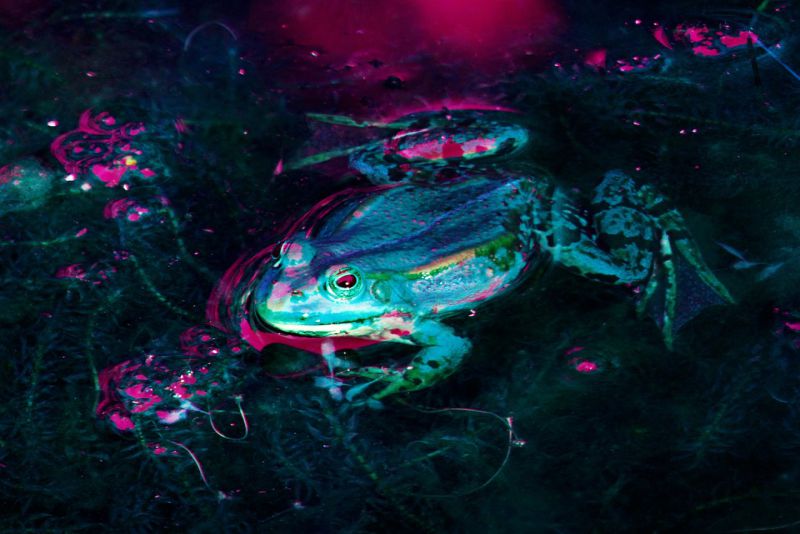
Pumpkin Toadlets are a unique species of miniature frogs that are found in the forest. They are known for their small size and unusual anatomy, which sets them apart from other frogs. One of the most distinctive features of these toadlets is the number of functional digits they have on their front and hind limbs. Unlike other frogs, pumpkin toadlets have only three or four functional digits on their hands and feet, while the rest of their digits have shrunk and are often not even visible.
The anatomy of these toadlets is a result of their miniaturization, which has reduced the size of their fingers and toes. This is in contrast to the typical image of frogs with long fingers and toes that have webbing between them, which is not the case for pumpkin toadlets. They lack webbing between their digits, which is not a problem for them as they live in the leaf litter away from large bodies of water like ponds and lakes.
Despite their small size, pumpkin toadlets are not very agile, and their poor jumping skills are a result of their shrunken digits. Their slow march through the forest is a testament to their lack of dexterity and mobility, but they do not seem to mind. These toadlets prefer to walk rather than jump, which is a unique trait among frogs.
Furthermore, pumpkin toadlets are a fascinating species of frogs that are known for their miniature size and unusual anatomy. Their unique features, such as the number of functional digits and the lack of webbing, make them stand out from other frogs. Despite their slow pace, they are fascinating creatures to observe and learn about in their natural habitat. So, the next time you find yourself in the forest, keep an eye out for these mini pumpkin toadlets and marvel at their unique anatomy.
5. Jumping
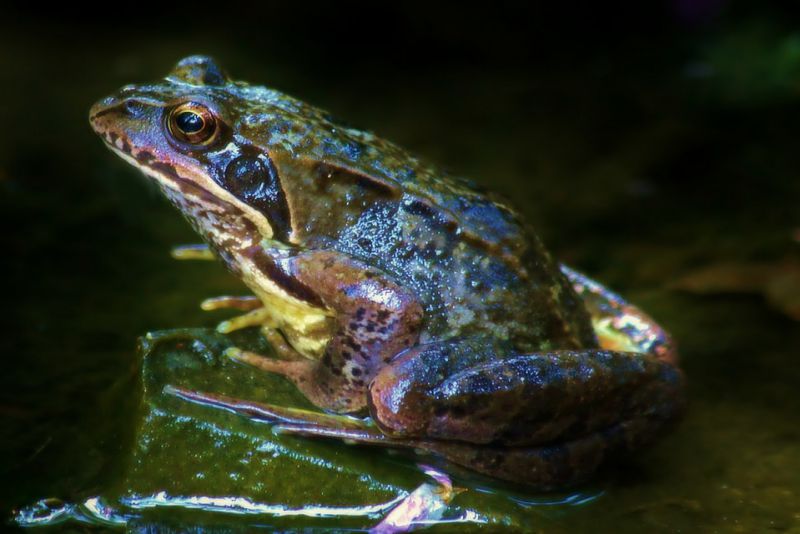
The Pumpkin Toadlets are a unique species of frogs known for their miniature size and interesting jumping behavior. Despite their tiny appearance, these frogs face some challenges due to their small size. One of the major downsides of being so small is their ability to jump and land. This is because they are unable to judge where they are in space, which is due to their small ears and lack of balance.
Despite their less-than-elegant jumping style, the Pumpkin Toadlets are an essential part of their ecosystem and play a vital role in maintaining the balance of nature. These tiny creatures have adapted to their environment and have found ways to survive despite their limitations.
Furthermore, the Pumpkin Toadlets are a fascinating species of frogs that are unique in their size and jumping behavior. So, the next time you come across a jumping Pumpkin Toadlet, take a moment to appreciate its unique characteristics and its place in the natural world.
6. Hearing
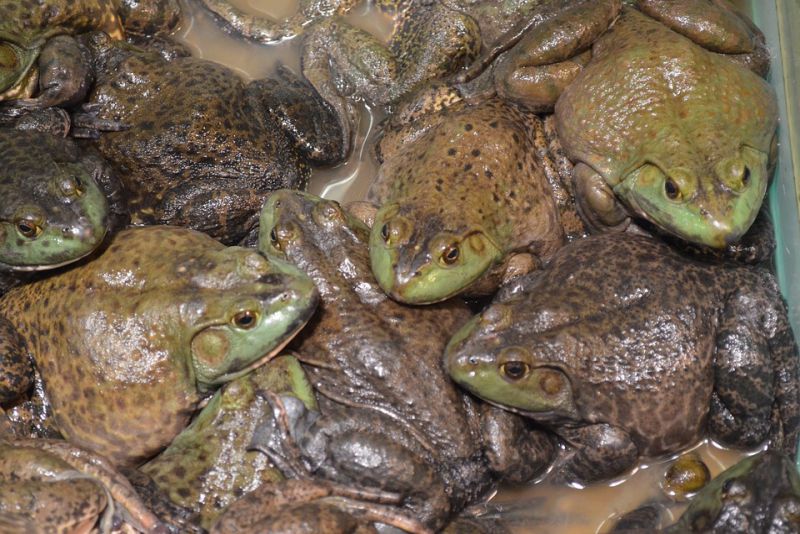
Pumpkin toadlets are a unique species of tiny frogs known for their bright orange color and size similar to that of an M&M. These tiny creatures inhabit the leaf litter of the forest, where they call out in a series of quiet, high-pitched buzzing calls. Despite their calls, pumpkin toadlets are actually deaf, which is a surprising discovery that came about when scientists closely examined their ear structures.
The calls of the pumpkin toadlets were initially thought to be either a territorial warning among males or a mating call to attract nearby females. However, it was discovered that they can’t even hear their own calls, which led scientists to believe that this is a remnant from an earlier stage in their evolution. Despite their deafness, the calls of the pumpkin toadlets still play an important role in attracting potential mates.
The visual display is accompanied by the waving of their front legs, which resembles the act of cleaning their face. This visual display may not be heard, but it is still a critical part of the pumpkin toadlet’s mating ritual.
Moreover, while the deafness of pumpkin toadlets may seem like a hindrance, it hasn’t stopped them from finding love. Their visual displays and unique calls are still an important aspect of their mating behavior, and they continue to thrive in their forest habitat. So, despite their small size and lack of hearing, pumpkin toadlets are truly a remarkable species that captivates scientists and nature enthusiasts alike.
7. Poison
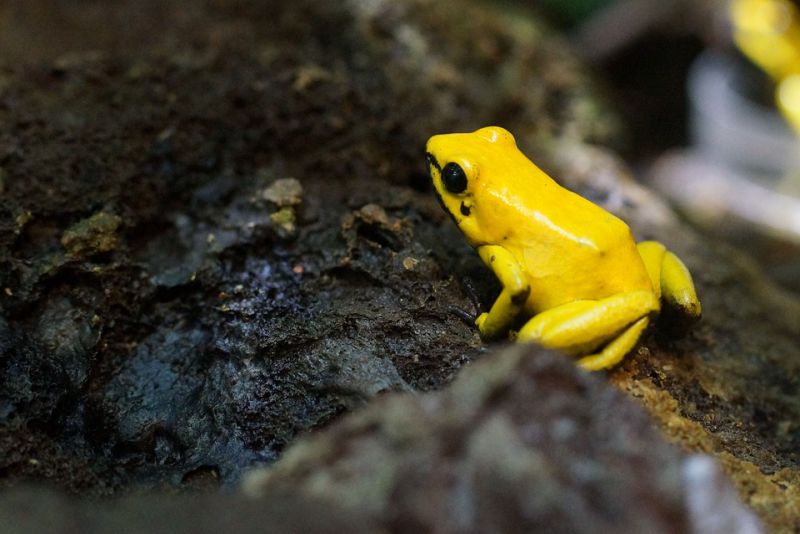
The Pumpkin Toadlets are a mesmerizing species of amphibians with vibrant pumpkin-hued skin that is both captivating and warning. These tiny creatures pack a powerful punch with the presence of tetrodotoxin, a neurotoxin found in some pufferfish, octopuses, and crabs, in their skin and organs.
This potent toxin interferes with the nervous system’s ability to transmit messages, causing a host of life-threatening symptoms, including complete paralysis. But, if the tetrodotoxin fails to do the job, the Pumpkin Toadlets have 11 other paralytic toxins to fall back on.
The level of the toxin on the skin and the specific toxins secreted vary among different species of Pumpkin Toadlets. Some species are too toxic to handle with bare hands, while others are safe to touch as long as proper precautions, such as not touching the eyes or mouth after handling, are taken.
Despite their toxic properties, the Pumpkin Toadlets play a vital role in their ecosystem as a form of defense against predators. Their bold coloration serves as a warning, and their toxicity ensures they are not preyed upon.
These elusive creatures can be found in diverse environments, including rainforests and caves, and boast unique behaviors and habitats that make them even more intriguing. Although the Pumpkin Toadlets are dangerous to both humans and potential predators, ongoing research continues to uncover new information about these fascinating creatures and their place in the ecosystem.
For those interested in amphibians, the Pumpkin Toadlets are a must-see species. They are a combination of deadly danger and captivating beauty, making them a prime example of the wonders that nature holds.
Moreover, the Pumpkin Toadlets are a reminder of the beauty and danger that can exist in nature. While caution should be taken in handling these toxic creatures, they are also fascinating species that are worth learning about and appreciating.
8. Glowing Bones
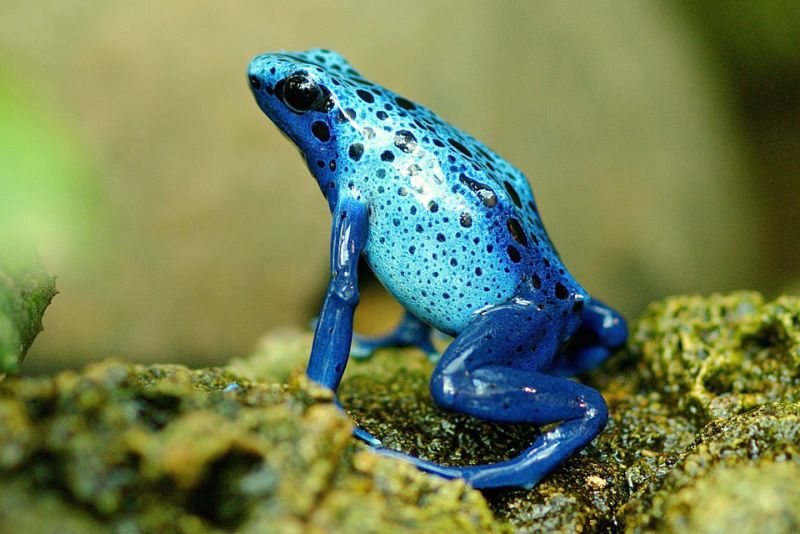
The Pumpkin Toadlet is a unique and fascinating creature that boasts some amazing features beyond just its bright orange hue. Under ultraviolet light, the bones of the Pumpkin Toadlet fluoresce with a brilliant blue light, shining through the skin of their heads and backs. It’s as if the little toadlets are wearing tiny skeletal helmets and back plates.
Some believe it may be an extra warning about the toxicity of these little toads, while others think it may serve a more practical purpose. For example, it is possible that these glowing bones help the toadlets find each other during the breeding season. If this is the case, then the Pumpkin Toadlets may actually be able to see their own glowing skeletons, which could be a helpful tool for finding a mate.
In addition to their glowing bones, the Pumpkin Toadlets are also known for their striking orange coloration, which makes them highly visible and easy to spot in their natural habitat. This bright coloration is believed to serve as a warning to predators that the toadlets are toxic and should not be consumed.
But, despite their brilliant appearance and interesting features, these little toads face numerous threats in the wild. Their populations are declining due to habitat destruction, climate change, and the introduction of non-native species into their environment. This makes it all the more important to protect and conserve these unique and fascinating creatures, so future generations can continue to enjoy the beauty and wonder of the Pumpkin Toadlet.
So, if you ever have the chance to see a Pumpkin Toadlet in the wild, be sure to appreciate the amazing features that make this species so special. And, if you’re interested in helping to protect these creatures, consider supporting conservation efforts or participating in research to learn more about these fascinating creatures. With our help, the Pumpkin Toadlets can continue to thrive and captivate us with their unique and fascinating features for generations to come.
9. Beautiful Colors
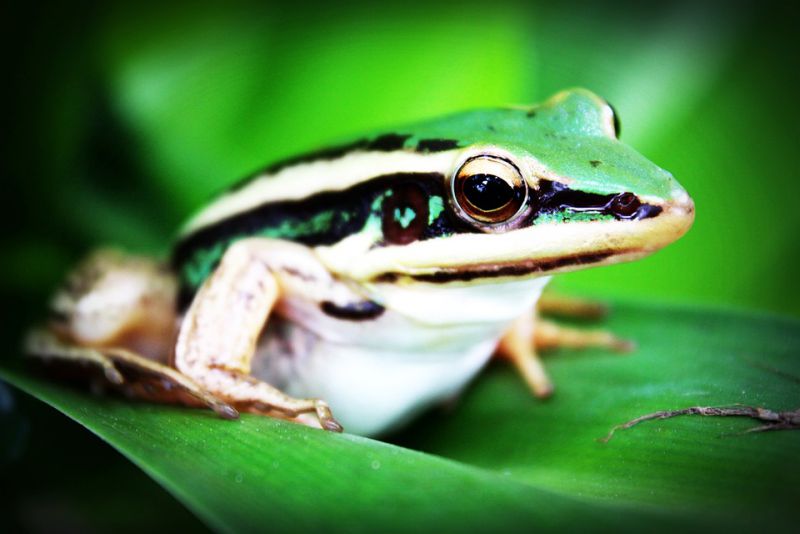
The Pumpkin Toadlet is a tiny frog that stands out on the forest floor with its bright, bold coloration. As the name suggests, these little creatures are bright yellow or orange, with some species displaying even bolder shades of red with black spots or mottled bumps. At first glance, it might seem like this striking coloration could make the Pumpkin Toadlet a target for predators, but in reality, it provides them with unique camouflage.
The pumpkin-like hue of these frogs blends in perfectly with their surroundings, especially during the rainy season. At this time, the forest floor is dotted with small yellow or orange leaves, vibrant orangish mushrooms, and brilliant seeds. This colorful landscape provides the perfect backdrop for the Pumpkin Toadlet to blend in and escape notice from potential predators.
But the Pumpkin Toadlet isn’t just all about its appearance; these tiny creatures have some fascinating adaptations and behaviors. For one, they are most active during the rainy season, making the most of the abundance of food and water in their environment. Additionally, they are known for their excellent camouflage, allowing them to blend in with their surroundings and avoid detection.
So, if you’re looking for a fascinating and brightly-colored creature to observe on the forest floor, be sure to keep an eye out for the Pumpkin Toadlet. With their unique appearance and behaviors, they are sure to capture your attention and leave you in awe.
10. Size

Pumpkin Toadlets, also known as teeny tiny frogs, are unique creatures with their miniature size. These adult toadlets can grow up to the size of a Skittle, with some species reaching lengths of 0.4 inches to 0.6 inches (10.8mm to 14mm), and others reaching a staggering 0.77 inches (19.7mm). Despite their small size, pumpkin toadlets have several advantages that set them apart from other frogs.
One of the biggest pros of being small is that pumpkin toadlets are an unlikely target for predators. Their size makes them nearly invisible, which helps them to avoid being hunted. The Atlantic Forest, where they are commonly found, provides the perfect hiding place for these tiny creatures. They can be found hiding under leaf litter and logs, where they are safe from harm.
But size is not the only thing that makes pumpkin toadlets so unique. They are also known for their small eggs, which are roughly 3/16-inch (5mm) in size. That’s smaller than a grain of rice! The small size of the eggs makes it possible for the toadlets to lay them in small crevices and other hidden spots, where they are safe from predators.
Despite their size, pumpkin toadlets play an important role in their ecosystem. They are a crucial food source for many species and help to control the population of insects. They also serve as pollinators, spreading pollen from plant to plant, which is essential for the health of the forest.
Pumpkin toadlets are also unique in that they have bright, vibrant colors. Some species have bright orange, yellow, or red markings, making them easy to spot and hard to forget. These colors serve as a warning to predators, letting them know that the toadlets are not a good food source.
Moreover, pumpkin toadlets are small, but mighty creatures that are an important part of the Atlantic Forest ecosystem. Their tiny size and bright colors make them unique and unforgettable, and their role in the food chain and as pollinators is essential for the health of the forest. So the next time you come across a Skittle-sized frog, take a moment to appreciate the wonder and beauty of pumpkin toadlets.
